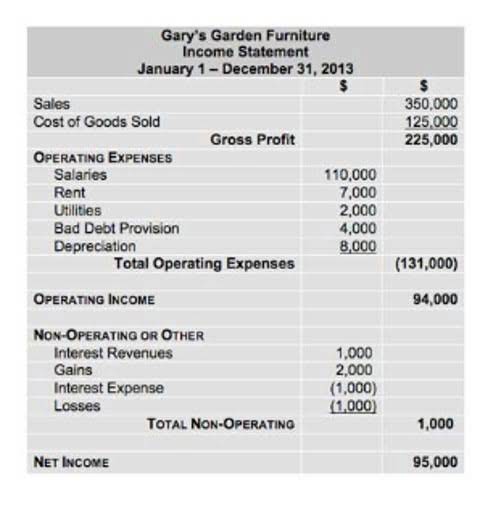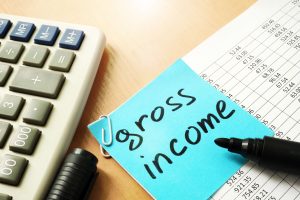
Subsidiary accounts can also consist of records for various suppliers and vendors. Suppose that on December 31, 2020, the total debtors in the general ledger of ABC manufacturing company valued at $180,000 as break-up is shown. So, if reconciliation/control proves that there is no difference between two balances, it means figures are reliable and can be used to prepare the financial statement.
Irrecoverable Debts & Provision for Doubtful Debts

Customer accounts are debtors, therefore an asset account in the GL, suppliers are creditors, therefore a liability. The next main type of accounts receivable transaction is the receipt of cash from the customer for the outstanding invoice. In fact, it contains two special accounts relating to the above, called control accounts. Check your understanding of this lesson by taking the quiz in the Test Yourself! And right at the bottom of the page, you can find plenty more questions on control accounts submitted by fellow students.
Control Accounts and the Accounting System
- The control account keeps the general ledger clean of details, but contains the correct balances used for preparing a company’s financial statements.
- Chances are there that some entries may remain missing or incorrectly posted into leaders.
- The regular reconciliation of control accounts provides timely and accurate financial data, which aids management in making informed decisions about the company’s future direction.
- For example, a creditor control account’s balance would represent the total amount payable to the company’s suppliers.
Similarly, all the entries regarding credit sales are posted in the account receivable ledger, along with sales returns and discounts allowed. To ensure accuracy of the ending balance for accounts receivables, we obtain accumulated figures for the credit sales, cash received, sales return, and discount allowed to construct the control account. Trade receivable for the period stands at $10000 in different debtors’ accounts, and trade payable stands at $ in different creditors’ accounts.
What is the purpose of control accounts?

Receivable Control Account is also called Sales Ledger Control Account, similarly, Payable Control Accounts is sometimes called Purchase Ledger Control Account. Secondly, each month we post the total of Sales Journal into the debit side of the Receivable Control Account, and the credit side of the Sales Ledger. Many small business owners wonder if bookkeeping will be complicated when they https://www.bookstime.com/ start. Owners feel overwhelmed when it comes to keeping their books in order…. Angela Boxwell, MAAT, brings over 30 years of experience in accounting and finance. As the founder of Business Accounting Basics, she offers a wealth of free advice and practical tips to small business owners and entrepreneurs dealing with business finance complexities.
Benefits of Using Control Accounts

It consolidates detailed transactions from subsidiary ledgers, such as accounts receivable or accounts payable, into a single summary figure, which streamlines financial reporting and enhances clarity. This separation of detailed and summary data reduces the risk of errors in the general ledger, facilitates faster account reconciliation, and allows for easier detection of discrepancies. In addition, it enables efficient workload distribution among accounting staff, as one team can manage detailed records while another oversees summary reporting. Overall, control accounts support both operational efficiency and robust internal controls. In double-entry bookkeeping, control accounts are typically used in conjunction How to Invoice as a Freelancer with subsidiary ledgers.
The total of Mary Rose’s sales ledger balances is £9387, which differs from the closing balance in the sales ledger control account. Consolidating multiple subsidiary accounts into one control account reduces the amount of time spent on manual data entry, and simplifies tracking transactions across multiple accounts. These types of accounts are most often used by very large organizations that have a significant volume of transactions on a day-to-day basis.
- In this case, there are three possibilities of errors that include the following.
- Therefore the use of control accounts is declining in modern data management and accounting systems.
- The role of this control account is to monitor all the pending payments that a company must make.
- They serve as a critical line of defense against errors and fraud and provide a clear, organized view of a business’s financial status at any given time.
- In double-entry accounting, accounts receivable and accounts payable are the most commonly used control accounts.
- For instance, all the transactions regarding credit purchases will be posted in the subsidiary payable accounts, where party-wise data is maintained along with purchase returns and discounts received.
A control account works as an adjusting and controlling account that summarizes and sums up balances of all subsidiary accounts’ information of a specific account type in a general ledger. Subsidiary accounts are used to provide support and detailed information on a related account type. The general ledger account that sums the subsidiary accounts is said to control the balances that are reported in the ledger. This makes sense because the subsidiary accounts are not directly reported in the GL. They are summarized and posted to the control account that in turn appears in the GL. In this way, the controlling account really does dictate what appears in the GL and what is reported on the financial statements.
- The same principle of bookkeeping is followed for the other Control Accounts as well.
- Opposite to the Accounts Receivable, Accounts Payable represents the amount a company owes for purchasing goods or services on credit from its suppliers or vendors.
- For instance, the Accounts Receivable represents the total amount your customers owe you, a key asset on the balance sheet.
- It might include the supplier or customer name, an invoice number, or a brief narration of the transaction that helps to provide context around the transaction.
- C) Beginning with the given total of $67 660, show the changes to be made in the Purchase Ledger to reconcile it with the new Control account balance.
- This can slightly increase the time required to investigate a transaction, but it is not a critical concern.
- A control account is a financial summary of the activity of several subsidiary (secondary) accounts so that they appear as one central account in a general ledger.
A simple way to understand this format is to assume the normal debtor account. A normal debtor account will have a debit entry, representing an increase in the debtor account. The source documents are used to enter details into the book of prime entry which, for receipts transactions, is the cash book.
Why Can a Bank Feed Help your Business be More Efficient?
To do so, we get accumulated balances that affect the movement of accounts. For instance, Accounts payable is effected by credit purchases, payment made to the supplier, purchase returns, and discounts received. In other words, control account enables us to reconcile the what is a control account in accounting aggregated balance of the subsidiary ledger with the total balance to be used in trial balance.